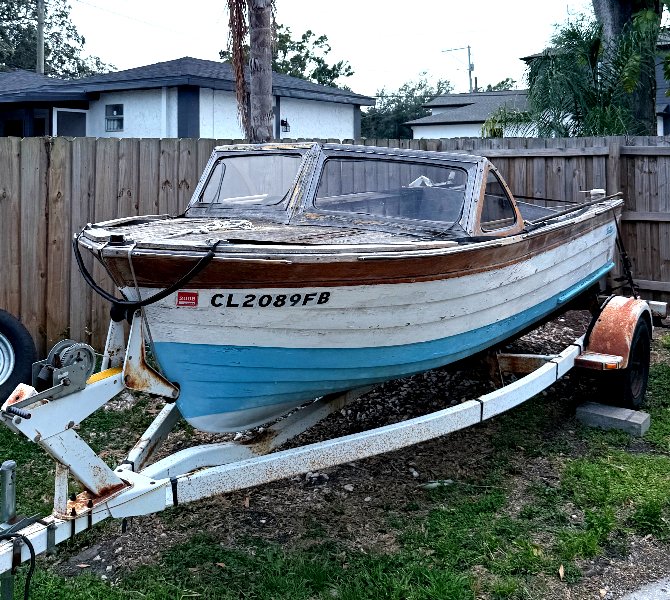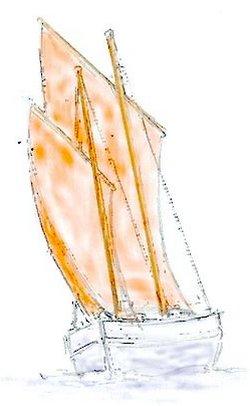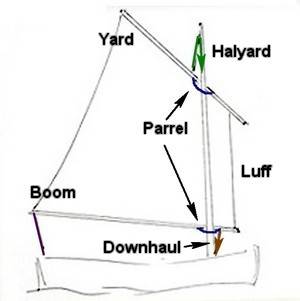- Home
- Your Boats
- Knots
Knots Every Boater Should Know.
Here are a few of the most useful knots which any boater should have a working knowledge of.
Don’t be a lubber, learn to tie your lines correctly.
I have included links, at the bottom of the page, to a
couple of sites
with
animated instructions, just in case you find my drawings confusing.
There are a couple of terms which are used when describing how to tie
them.
- The Bitter End is the end of the rope which you are working with when tying.
- The Bight is a loop or bend which you you make in the line.
Round turn and two half hitches.
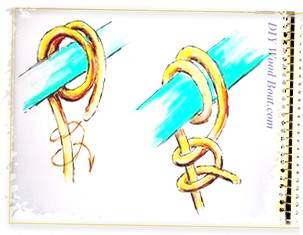 Round turn and two half hitches
Round turn and two half hitchesThis is a handy and simple way to quickly tie up to a mooring ring or stanchion.
Just remember it is a full round turn before the two half hitches.
The anchor hitch is a variation on this, where the bitter end goes under the round turn before making the two half hitches.
affiliate linksClove hitch.
 Clove hitch
Clove hitchThis is a quick hitch for tying a rope around a post or spar.
It can be used to tie fenders as it is easy to adjust.
Figure of eight.
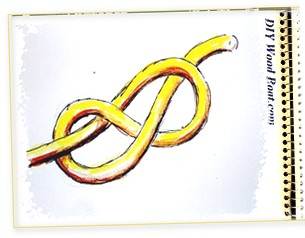 Figure of Eight
Figure of EightPut
a figure of eight on the end of all
your running
rigging to prevent the ends running out through blocks or cars.
Reef or Square knot.
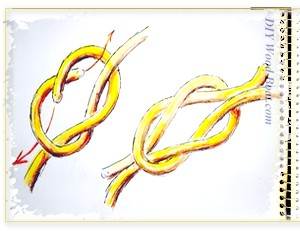 Reef/Square Knot
Reef/Square KnotTraditionally used when tying up reefed sails to their spars.
This is a neat tie which works well under tension.
Do it properly otherwise you will end up with a granny knot which is pretty useless.
Sheet bend.
 Sheet Bend
Sheet BendThis is the way to tie two dissimilar types of rope together.
It is especially useful for differing thicknesses of rope.
Cleat hitch.
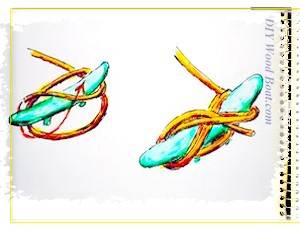 Cleat Hitch
Cleat HitchWhen cleating off always take a full turn around the base of the cleat before starting he figure of eights.
The normal method of locking the turns is to pass the bitter end under the top strand.
However if you finish with a full turn then jerk on it, the bitter end will lock itself under the turns.
This will be just as secure as a locking turn and be simpler to un-cleat.
Bowline.
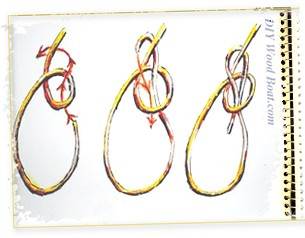 Bowline
BowlineIf you can’t tie a bowline then you can’t call yourself a sailor.
It is quite quick and easy once you get the hang of it.
This is the best way to tie a loop which doesn’t slip or jam.
You will find innumerable uses for it.
Rolling hitch.
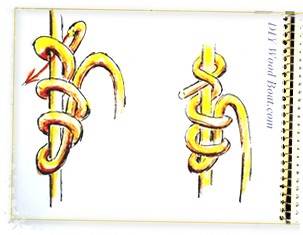
This is similar to the clove hitch but with at least one more turn.
It is useful for taking the strain off another line.
It will easily slide along in the direction of the bitter end but will jam when pulled from the other direction.
The Zeppelin Bend
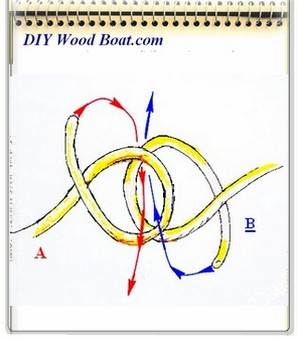 Zeppelin Bend
Zeppelin BendHere is a much neglected method for tying two ropes together.
Not only is it easy to tie but it is very secure, both under load and slack.
It is jam proof and can be used to tie differing ropes together.
I'm told that it is so called because it was the preferred knot used to tie down the airships of that name.
Make a bite (loop) in the bitter end of each rope.
Loop A with the bitter end on top and loop B with the bitter end below.
Place loop A on top of loop B.
The bitter end of A then goes up through the center, the bitter end on B goes over and down through the center.
Pull tight and you've got a secure neat symmetrical knot.
The
Prusik Knot
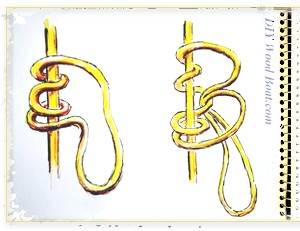
This is another friction hitch.
It is, apparently used mainly by climbers.
I have climbed my mast using two strops tied with prusiks to the main
halyard.
Stand in one loop as you push the other up the halyard then reverse the procedure.
It isn’t easy but it does work.
I've shown it here as a closed loop but it doesn’t have to be a loop
and the knot can be used in many other situations where a friction knot
is required.
The advantage of the prussic is that it is easy to tie and will slide
easily in either direction until pressure is applied to the loop.
It is tied by wrapping the loop around the ‘halyard’ several times and then back through the centre of itself.
Turk's Head.
Books

